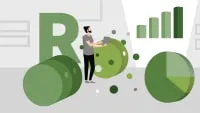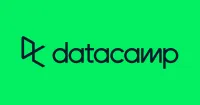
Tableau and R for Analytics Projects 
This course teaches how to use the powerful combination of Tableau and R to analyse and present data more effectively. Students will gain an understanding of the analytical capabilities of R and the visualisation power of Tableau. ▼
ADVERTISEMENT
Course Feature
![]() Cost:
Cost:
Free Trial
![]() Provider:
Provider:
LinkedIn Learning
![]() Certificate:
Certificate:
No Information
![]() Language:
Language:
English
Course Overview
❗The content presented here is sourced directly from LinkedIn Learning platform. For comprehensive course details, including enrollment information, simply click on the 'Go to class' link on our website.
Updated in [March 06th, 2023]
This course provides an overview of how to combine the analytical capabilities of R with the visualisation power of Tableau to more effectively analyse and present data. Participants will learn how to install R and RServe, create a link between Tableau and R, and perform a variety of analyses in R, ranging from linear regression to cluster identification. The course will also demonstrate how to integrate the results of these analyses into Tableau visualisations. By the end of the course, participants will have a better understanding of how to use Tableau and R together to create powerful data visualisations.
[Applications]
The application of this course can be seen in a variety of ways. By combining Tableau and R, users can create powerful visualisations that can be used to analyse and present data more effectively. Additionally, users can use the skills learned in this course to perform a variety of analyses in R, ranging from linear regression to cluster identification, and integrate the results into Tableau visualisations. Finally, users can use the knowledge gained in this course to create a link between Tableau and R, allowing for more efficient data analysis and presentation.
[Career Paths]
1. Data Scientist: Data Scientists use a combination of Tableau and R to analyse and interpret data, identify trends, and develop predictive models. They are also responsible for creating visualisations to present their findings. As the demand for data-driven decision-making increases, the demand for Data Scientists is expected to grow.
2. Business Intelligence Analyst: Business Intelligence Analysts use Tableau and R to analyse data and develop insights that can be used to inform business decisions. They are responsible for creating visualisations to present their findings and for developing dashboards to track key performance indicators.
3. Data Visualisation Designer: Data Visualisation Designers use Tableau and R to create visually appealing and informative visualisations that can be used to communicate complex data. They are responsible for creating interactive visualisations that can be used to explore data and uncover insights.
4. Data Engineer: Data Engineers use Tableau and R to develop data pipelines and ETL processes to extract, transform, and load data into data warehouses. They are responsible for designing and building data architectures that can be used to store and analyse large datasets. As the amount of data continues to grow, the demand for Data Engineers is expected to increase.
[Education Paths]
1. Bachelor of Science in Data Science: This degree path focuses on the development of data-driven solutions to complex problems. It combines the principles of mathematics, computer science, and statistics to analyze and interpret data. Students learn to use programming languages such as Python, R, and Tableau to create data visualizations and develop predictive models. This degree path is becoming increasingly popular as businesses and organizations rely more heavily on data-driven decision-making.
2. Master of Science in Business Analytics: This degree path focuses on the application of data-driven techniques to business problems. Students learn to use data-driven tools such as Tableau and R to analyze and interpret data, develop predictive models, and create data visualizations. This degree path is becoming increasingly popular as businesses and organizations rely more heavily on data-driven decision-making.
3. Master of Science in Data Science: This degree path focuses on the development of data-driven solutions to complex problems. It combines the principles of mathematics, computer science, and statistics to analyze and interpret data. Students learn to use programming languages such as Python, R, and Tableau to create data visualizations and develop predictive models. This degree path is becoming increasingly popular as businesses and organizations rely more heavily on data-driven decision-making.
4. Doctor of Philosophy in Data Science: This degree path focuses on the development of data-driven solutions to complex problems. It combines the principles of mathematics, computer science, and statistics to analyze and interpret data. Students learn to use programming languages such as Python, R, and Tableau to create data visualizations and develop predictive models. This degree path is becoming increasingly popular as businesses and organizations rely more heavily on data-driven decision-making.
Course Syllabus
Compare the strengths of Tableau and R
See how R and Tableau can work together
Install R on a computer
Download and install CRAN packages in R
Run Rserve and establish a connection to Tableau
Course Provider

Provider LinkedIn Learning's Stats at AZClass
The Tableau and R for Analytics Projects course teaches how to use the powerful combination of Tableau and R to analyze and present data more effectively. You'll learn how to combine the analytical power of R with the visualization power of Tableau to analyze and present data more effectively. This course demonstrates the installation of R and RServe, and you'll create a link between Tableau and R and perform a variety of analyzes in R, from linear regression to cluster identification and integrate the results into Tableau visualizations. Learners gain a comprehensive understanding of the fundamentals of data analysis and visualization and how to create powerful and insightful visualizations using Tableau and R.
Discussion and Reviews
0.0 (Based on 0 reviews)
Explore Similar Online Courses

Space Exploration MasterClass - Chris Hadfield

Java Programming Basics

Python for Informatics: Exploring Information

Social Network Analysis

Introduction to Systematic Review and Meta-Analysis

The Analytics Edge

DCO042 - Python For Informatics

Causal Diagrams: Draw Your Assumptions Before Your Conclusions

Whole genome sequencing of bacterial genomes - tools and applications

The Data Analyst Course: Complete Data Analyst Bootcamp

Data Analysis in Excel


Start your review of Tableau and R for Analytics Projects